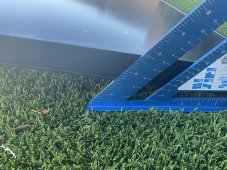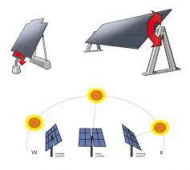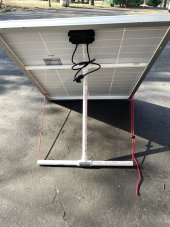I will report back how they hold up - they are not out all the time, just when I charge my EcoFlow units - and the PVC is shaded behind the panel.
Other than my time the cost of the the PVC was about $14 ( 2x 10'x 0.50" and 8 T's ) - the tape I bought was $15.
From a manufacturer of PVC... Heritage Plastics
The Consequences of Sunlight Exposure for PVC Pipe and Conduit
Research has been done to determine the effects of long-term (two year) sunlight exposure on PVC pipe (See “UNI-TR-5: The Effects of Ultraviolet Aging on PVC Pipe,” by the Uni-Bell PVC Pipe Association). Other than the visible discoloration, the following summarizes the result on pipe physical properties:
| Physical Property | Performance Characteristic | Effect of Sunlight Exposure |
|---|
| Impact Strength | Impact Resistance | Decrease |
| Tensile Strength | Pressure Capacity | No Effect |
| Modulus | Pipe Stiffness | No Effect |
The research indicates that the sole performance characteristic adversely affected by sunlight exposure is impact resistance. Depending upon the type of pipe, additional care may be required during pipe handling and installation to avoid potential breakage. Once installed, however, there will be no effect on the pipe’s pressure capacity and external load capacity.
The degree to which impact strength is affected by sunlight depends upon a number of variables, including: time of exposure, climatic conditions, diameter of pipe, wall thickness of pipe, and type of PVC compound used. Because of the synergy of the variables, it is impossible to state how long it will take before the effects of sunlight exposure become noticeable. In general, pipes of smaller diameter and thinner wall will exhibit more effect from sunlight exposure than larger, thicker-walled pipe. The effect of sunlight exposure on thick- walled pressure pipes such as those made to AWWA C900 and C905 is almost unnoticeable, other than the surface discoloration.
Schedule 40 and Schedule 80 listed electrical conduit that has been tested for sunlight resistance according to UL651 requirements is approved for continuous outdoor exposed use.











